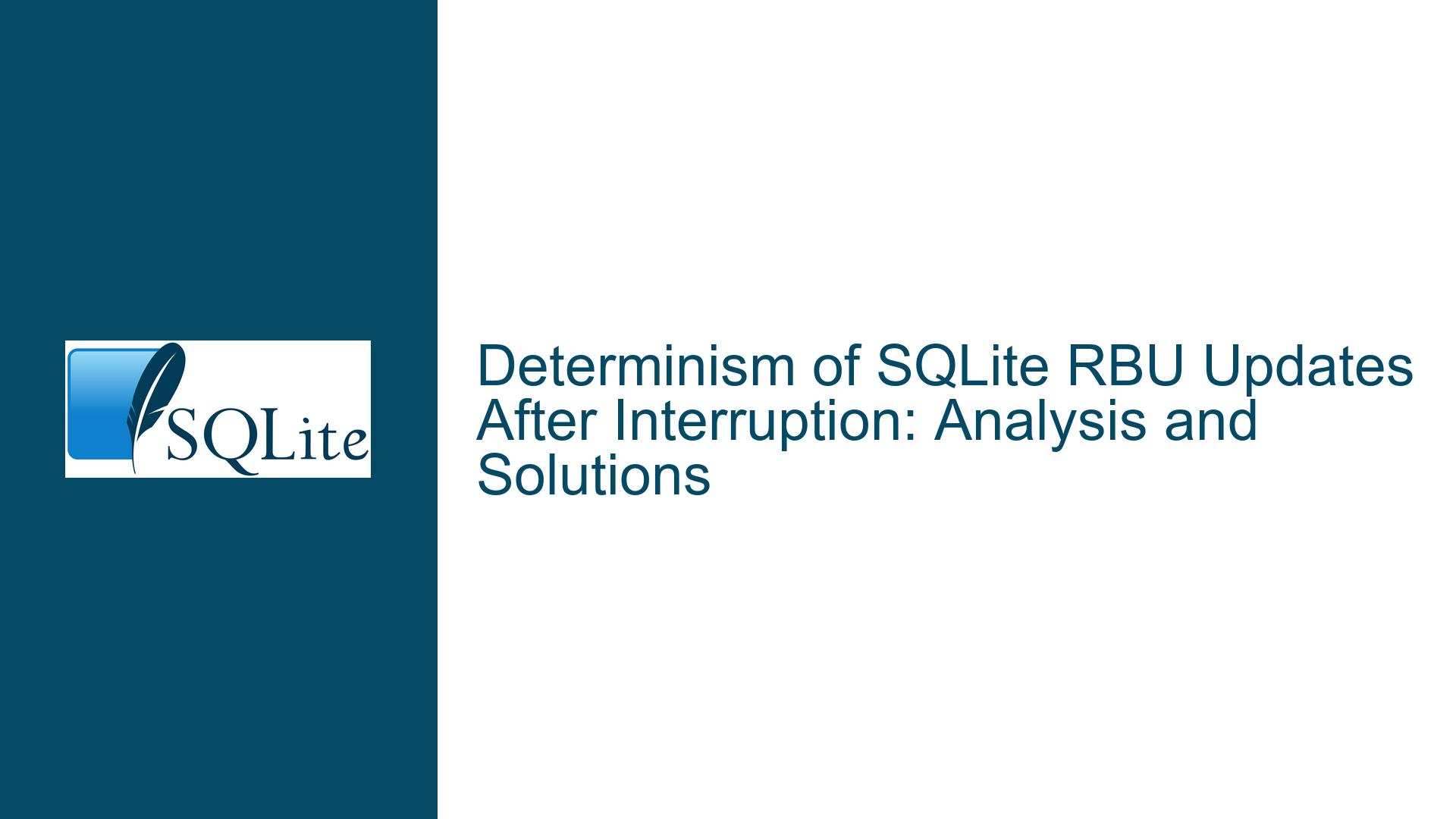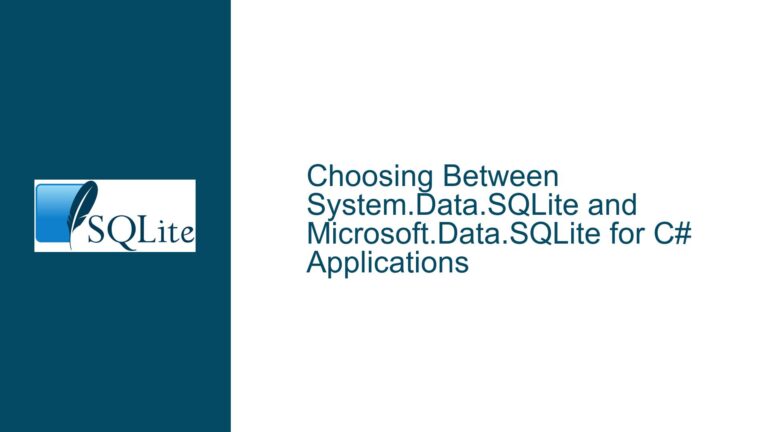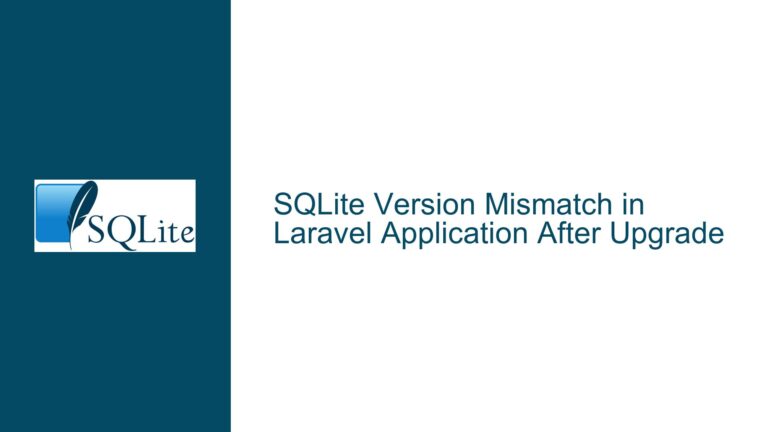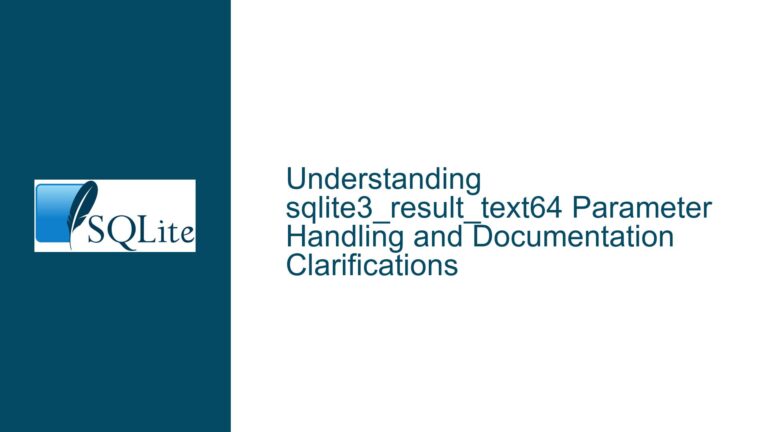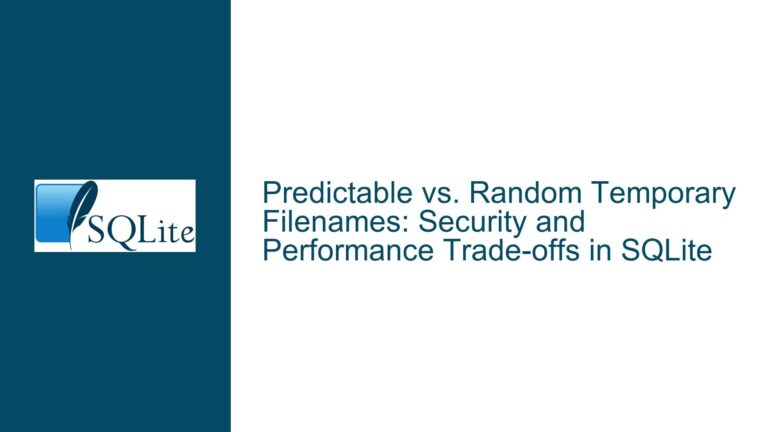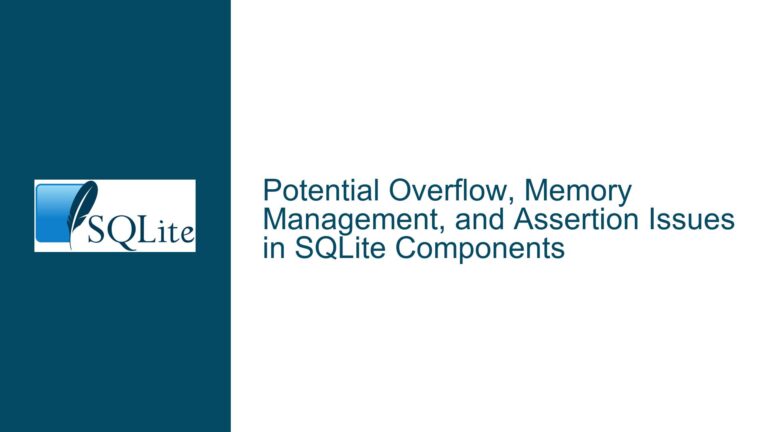Determinism of SQLite RBU Updates After Interruption: Analysis and Solutions
Understanding RBU Update Mechanics and Determinism Requirements
The core issue revolves around whether SQLite’s RBU (Rename-Based Update) extension produces byte-for-byte identical database files when an update process is interrupted at different stages. RBU is designed to apply large-scale changes to a database by creating a temporary copy of the target database, applying updates to this copy, and then atomically replacing the original database with the updated version via a filesystem rename operation. The determinism question arises when considering scenarios where the RBU process is halted prematurely—whether due to system crashes, manual intervention, or other failures.
RBU operates in distinct phases: initialization, data modification, and finalization. During initialization, RBU creates auxiliary tables and state-tracking structures. The data modification phase applies changes incrementally, often using a write-ahead log (WAL) or similar mechanism to track progress. The finalization phase commits all changes atomically by renaming the temporary database file to replace the original. Interruptions during any of these phases can leave the system in an intermediate state. The critical concern is whether restarting or resuming the RBU process after such interruptions will always converge to the same final database file, regardless of when the interruption occurred.
Determinism in this context is essential for applications requiring reproducible states, such as auditing, checksum validation, or distributed systems where multiple nodes must synchronize database states exactly. Non-determinism could introduce discrepancies that compromise data integrity or system coordination.
Factors Influencing Non-Deterministic Outcomes in RBU Processes
A primary factor affecting determinism is the involvement of virtual tables. Virtual tables in SQLite are implemented via user-defined C modules, which may introduce external state or non-SQLite-managed data structures. If an RBU update includes writes to virtual tables, the behavior of those modules during interruptions is undefined by SQLite itself. For example, a virtual table might cache intermediate results or rely on external APIs that do not guarantee idempotent operations. Resuming an RBU process after interrupting such a module could lead to divergent final states depending on when the interruption occurred.
Another factor is the transactional integrity of the RBU process. SQLite uses atomic commit mechanisms to ensure that transactions are either fully applied or rolled back. However, RBU’s multi-phase design complicates this. If an interruption occurs during the finalization phase (the rename operation), the filesystem’s behavior dictates whether the rename is atomic. On filesystems that support atomic renames (e.g., most POSIX systems), the finalization is all-or-nothing. However, if the interruption happens during data modification, the RBU extension must rely on its internal state tracking to resume correctly. Variations in how this state is managed—such as timestamps, sequence counters, or partial writes to auxiliary files—could lead to non-determinism.
Schema modifications during RBU updates present additional risks. Altering table structures, indexes, or constraints while applying RBU changes can create dependencies that are not resolved deterministically upon resumption. For instance, if an RBU process adds a column to a table and subsequently populates it with data derived from other tables, an interruption after the schema change but before data population might leave the column in an inconsistent state. Resuming the process might re-apply the schema change (causing errors) or skip it (leaving data incomplete), depending on RBU’s internal checkpointing logic.
Filesystem and operating system idiosyncrasies further complicate determinism. File rename operations, directory synchronization, and write ordering vary across platforms. For example, Windows NTFS handles renames differently than Linux ext4, particularly under crash conditions. Additionally, the use of file locks or memory-mapped I/O by concurrent processes could alter the visible state of the database during RBU operations, leading to divergent outcomes.
Strategies for Ensuring Deterministic RBU Updates and Mitigating Risks
To achieve deterministic RBU updates, first audit all virtual tables involved in the update process. Ensure that their implementations are idempotent and free of external state dependencies. If a virtual table cannot guarantee this, consider isolating its updates from the RBU process or replacing it with a standard table. For example, a virtual table that interacts with an external API should be redesigned to log API responses in a regular table during the RBU process, ensuring that restarts re-read from this log rather than making new API calls.
Second, leverage SQLite’s transactional guarantees by structuring RBU updates as a series of atomic transactions. RBU extensions typically allow batching updates into transactions of manageable size. Smaller transactions reduce the window during which interruptions can leave the database in an indeterminate state. After an interruption, the RBU process should resume by inspecting the last committed transaction and continuing from that point. To enforce this, enable SQLite’s PRAGMA journal_mode=WAL and ensure that the RBU configuration uses checkpointing to track progress.
Third, simulate interruptions during testing to empirically verify determinism. Use tools like kill -9 on Linux or task termination on Windows to forcibly halt the RBU process at various stages. After each simulated interruption, restart the process and compare the resulting database file to a reference (uninterrupted) version using checksums (e.g., SHA-256). Automate this process to cover a wide range of interruption points. If discrepancies arise, analyze the RBU state files and SQLite logs to identify non-deterministic operations.
Fourth, isolate schema changes from data updates. Apply all structural modifications (ALTER TABLE, CREATE INDEX) in a separate RBU phase prior to data population. This minimizes the risk of partial schema changes affecting data consistency. For example, if adding an index is necessary, complete it before inserting or updating records. SQLite’s ALTER TABLE operations are often instantaneous for schema additions, but complex changes may still require careful ordering.
Finally, validate the filesystem’s behavior regarding atomic renames and crash consistency. On POSIX systems, the rename() system call is atomic, but this is not universally true for all filesystems. Test the RBU finalization phase under power loss scenarios using tools like dd to simulate partial writes or hardware failures. For mission-critical deployments, consider using filesystems with proven crash consistency, such as ZFS or APFS, and avoid network-mounted filesystems (e.g., NFS) that may not guarantee atomicity.
If determinism cannot be guaranteed due to uncontrollable factors (e.g., third-party virtual tables), fall back to alternative update mechanisms. SQLite’s VACUUM command or offline backup/restore cycles (using .dump and .restore) provide more predictable outcomes at the cost of increased downtime. Alternatively, design the application to tolerate eventual consistency, using versioned records or content-addressable storage to detect and reconcile discrepancies post-update.
By methodically addressing virtual tables, transaction boundaries, schema changes, and filesystem reliability, developers can maximize the likelihood of deterministic RBU updates even under adverse conditions.
